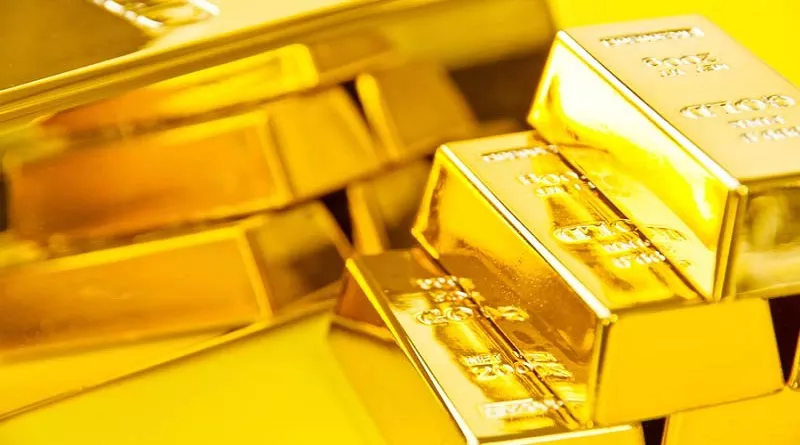After a year of soaring gold prices, luxury watchmakers are grappling with significant cost pressures. Where gold cost approximately $2,300 an ounce a year ago, prices have now surged to around $3,300 an ounce — a 40 percent increase. With ongoing volatility in stock markets, few analysts predict a near-term correction.
Gold remains a cornerstone for luxury watch brands. According to the Federation of the Swiss Watch Industry, timepieces crafted from precious metals — including gold and platinum — accounted for nearly 40 percent of the value of Swiss watch exports last year, despite representing just 2.7 percent of total units by volume.
Many watchmakers have responded by passing higher costs onto consumers. Rolex, the industry’s largest player, raised prices on its gold watches by 8 percent earlier this year, following two price hikes in 2024. A further increase is anticipated next month.
Meanwhile, some brands have drastically reduced their inventories, pulling hundreds of gold models from the market. Data from Geneva-based marketing agency Digital Luxury Group shows that in the first three weeks of April, the average price of Cartier watches listed on the US website dropped by 30.4 percent following a 63.8 percent reduction in inventory — a move attributed to the withdrawal of higher-priced gold models.
Digital Luxury Group also noted that following US President Donald Trump’s tariff announcements in early April, price increases accelerated. Watches priced over $100,000 saw average hikes of 17.5 percent, with rose gold models particularly impacted — prices rose 23.5 percent even as inventory dropped by 16.4 percent, signaling a sharp market shift.
Smaller independent brands are adapting cautiously. Edouard Meylan, CEO of Swiss watchmaker H. Moser & Cie, explained, “We’re using the gold we bought last year but are only reordering when absolutely necessary.” He added that demand for rose gold watches remains strong, with many buyers viewing them as investment pieces.
According to the World Gold Council, demand for gold in the jewelry sector fell from 538.5 tonnes in Q1 2024 to 434 tonnes in the same period this year, although overall global gold demand rose 1 percent, driven by a 170 percent surge in investment.
Meylan highlighted the financial risks involved: “I’m canceling all non-essential gold orders because pricing is too uncertain. Gold watches currently carry the highest risk with the lowest margins. We’re focusing more on steel and ceramic models.”
For other companies, the only viable path is continued price increases. Romain Marietta, Chief Products Officer at Zenith — part of LVMH’s Swiss watch portfolio — said, “We raised prices at the end of last year and expect to do so again.”
Gold watches represent roughly 20 percent of volumes but 30-35 percent of sales for both Moser and Zenith. Marietta noted, “White gold has become too costly for serial production and even limited editions. Retail prices risk losing competitiveness compared to brands producing gold watches at scale.”
Luxury analyst Luca Solca from Bernstein predicts the rising gold prices will create clear market winners and losers. “Top-tier brands like Rolex will navigate these challenges successfully,” he said. “Lower-tier brands will have to reduce volumes and optimize costs.”
Previously, it was assumed that buyers of high-end luxury watches were less sensitive to price changes. However, Marietta observes a shift: “We thought diehard collectors would be impervious to price, but price sensitivity is becoming more apparent even at the high end.”
In response, Zenith is exploring alternatives to gold, focusing on rarer metals such as platinum and tantalum, which, while more difficult to machine, may offer better margins. Their main release this spring, the GFJ Calibre 135, is a 160-piece limited edition platinum watch priced near $100,000 with an optional platinum bracelet.
Oliver Müller, founder of Swiss consultancy LuxeConsult, emphasized the broader cost impact. “Gold watch cases are crafted from bars weighing five times the final product’s weight. Although scraps are recycled, the upfront investment is substantial. Brands face higher raw material and financial costs, significantly impacting cash flow.”
Despite the price surge, demand for gold watches remains robust. Mohammed Seddiqi, CEO of Ahmed Seddiqi — the UAE’s largest watch and jewelry retailer — said, “In our market, demand for precious metal watches is relatively inelastic. Collectors continue to acquire gold timepieces.”
Seddiqi also expects steady supply, adding, “Brands are fulfilling orders regularly, ensuring a consistent influx of watches.”
To cope, some brands are innovating with alternative materials. Müller noted, “One option is to shift away from precious metals toward innovative materials like high-value plastics, as seen with Richard Mille. Another is reducing gold content by extruding components, which could ease cash flow pressures.”
Looking ahead, Meylan predicts material shifts in watchmaking: “White gold may decline as steel becomes cheaper and more fashionable. We might see palladium and tantalum replace gold. Gold watches could eventually reach platinum price levels due to scarcity.”
Yet, Seddiqi warns that buyers seeking gold watches tend to remain loyal to the metal regardless of alternatives. “Clients specifically want gold watches; their decisions are rarely swayed by platinum or tantalum options.”
An additional impact of rising gold prices could be a surge in pre-owned watch prices, as buyers look for bargains in a market experiencing a downturn. However, Charles Tian, founder of WatchCharts and co-author of Morgan Stanley’s market reports, says the secondary market has not yet seen significant effects. “The gold component contributes only about 10-15 percent to a watch’s overall value, so the 40 percent rise in gold prices translates to a modest overall increase.”
Tian also highlighted that gold Rolex models have outperformed steel variants over the past five years, increasing 32.3 percent in median value compared to 26.4 percent for steel. Still, he notes the post-pandemic market cooling means buyers are not heavily focused on gold watches currently.


